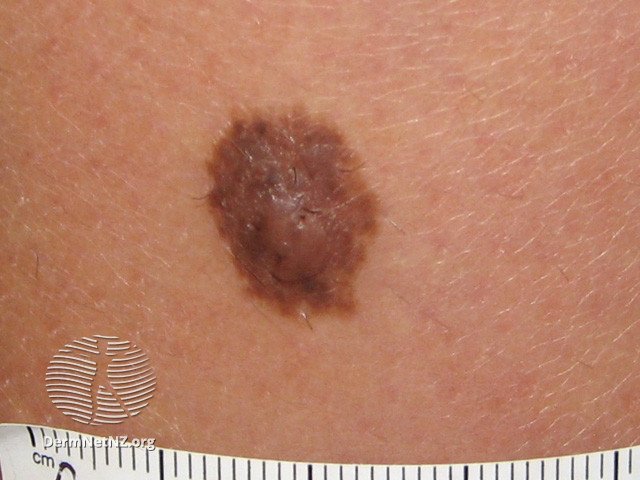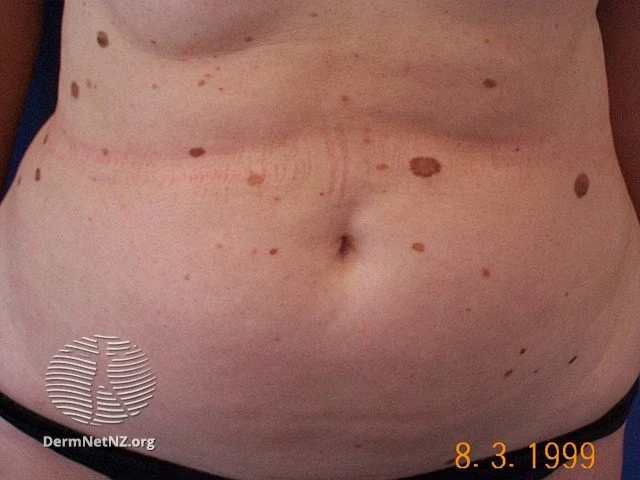
Moles (Nevi): Causes, Symptoms and Evaluation
Benign moles can present in many ways. This is a “fried-egg” nevus, which is thicker and darker in the middle and flatter and lighter around the edges.
Credit: DermNet NZ
What are Moles?
Moles, or scientifically termed as nevi, are benign skin growths that arise from the proliferation of melanocytes, the cells responsible for skin pigment. Typically brown or black, they can appear anywhere on the body, either singly or in clusters. Moles can be congenital (present at birth) or acquired later in life. Though mostly harmless, there's potential for moles to become malignant (melanoma), warranting regular self-examinations for any changes. Some people opt for mole removal due to cosmetic reasons or irritation. Patients should be aware that while most moles are harmless, regular skin checks are essential for early detection of any changes that might indicate skin cancer, such as melanoma.
What Causes Moles?
The number of moles an individual has can be influenced by genetics, sun exposure, and one's immune state. Factors increasing the likelihood of mole development include:
Fair complexion
Extensive sun exposure
Familial predisposition to moles
Usage of BRAF inhibitor medications (e.g., vemurafenib, dabrafenib)
Undergoing immunosuppressive treatments
What are the Symptoms of Moles?
Moles present a diverse range of appearances. They can be pink, flesh-colored, or even dark brown to black. Typically, moles align with an individual's skin tone: lighter on fair-skinned individuals and darker on those with dark skin. Moles are often round or oval but can sometimes adopt irregular shapes. Their size can range from pinpoint to several centimeters. It's crucial to be aware of the ABCDEF criteria when examining moles. Regular self-examinations and professional skin checks by a dermatologist can aid in early detection of atypical moles or skin cancer.:
Asymmetry: Uneven halves
Borders: Jagged or irregular edges
Color: Multiple shades or inconsistent pigmentation
Diameter: Larger than 6 mm (similar to a pencil eraser's size)
Evolution: Notable alterations over time
Funny Looking: Distinct from other moles on your body
Medical consultation is imperative for moles displaying any of the above characteristics.
How Do I Treat Moles?
Generally, moles without suspicious features don't necessitate removal. However, if a mole becomes easily irritated or if one wishes for aesthetic reasons, they can be surgically excised. Be mindful that surgical removal can result in scarring. Lasers can reduce a mole's pigmentation, but they're seldom advised due to the mole's obscured visibility for future medical examinations.
How Do I Prevent Moles?
Mitigating excessive sun and UV exposure from an early age is the primary preventive measure against moles. Strategies to consider:
Donning sun-protective apparel
Eschewing tanning salons
Applying sunscreen with SPF 50 or higher on sun-exposed regions
Considering Vitamin D supplements if avoiding sun exposure
Regular skin checks are an important part of maintaining skin health. If you have concerns about moles or skin changes, consider scheduling a full body skin examination with a dermatologist.
A dermal nevus, a type of flesh-colored mole that sits on the surface of the skin.
Credit: DermNet NZ
A patient with multiple atypical moles which is a risk factor for the development of melanoma.
Credit: DermNet NZ



